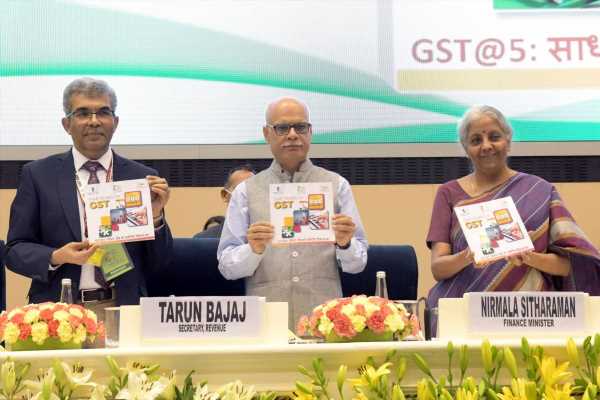‘GST collections will be Rs 1.3 TRILLION’
‘We revolutionised the system in a manner so that the chances of leakage will be much lower than it was in the beginning.’
“Some of the recent measures brought in the GST regime early this year, such as making returns sequential and restricting fake input tax credit, would start showing impact now,” Vivek Johri, chairman, Central Board of Indirect Taxes and Customs, tells Shrimi Choudhary/Business Standard.
GST is five. How has the journey been so far?
We have come a long way… First two years were challenging as revenue productivity fell below the expectations.
There were factors contributing to the complexities of the new regime.
Compliances were poor due to procedural burden and glitches at the GST network (GSTN) were also adding to the woes.
Moreover, the threshold for full exemption from GST was low. This was making small taxpayers comply with all requirements.
Besides, the narrative about the GST rate structure being complex and inversion were adding up to the complexities.
We tackled most of them by introducing the concept of e-invoicing, quarterly return filing and monthly payment of taxes.
We revolutionised the system in a manner so that the chances of leakage will be much lower than it was in the beginning.
How do you mitigate the revenue leakage?
We tried to strike a balance between ease of compliance and enforcement actions.
In November 2020, we started a drive, particularly to identify these taxpayers, by using data analytics as well as identifying risk parameters and we suspended several registrations.
We further tightened the regime by making the return filing sequential.
We said you cannot file GSTR 3B (return showing monthly summary of transactions) if you have not filed GSTR1 (return showing sales).
When we started the drive, we detected a large number of dealers, who were trying to misuse the input tax credit scheme through bogus invoices.
We had to revamp our strategy to deal with that. But at the same time, we also tried to simplify the return filing process.
We tried to rationalise the late payment fee so that it is not burdensome on taxpayers.
Besides, there are administrative measures we have taken for better compliance, such as encouraging non-filers and those who have stopped filing.
Through our data analytics, we would be able to detect cases where the supplier (seller of goods or service) has not uploaded certain invoices or uploaded invoices but not paid the tax.
The enforcement drive launched along with the states has been quite successful with a large number of cases being detected.
Bogus invoices prevail in some sectors. What is your take?
Yes, it does. Some of the entities use bogus invoices in certain categories, mainly metal scraps. This is because a lot of that gets generated domestically for which there is no tax payment invoices.
However, some of the recent measures brought in the GST regime early this year, such as making returns sequential and restricting fake input tax credit would start showing impact now.
This may curb bogus receipts, input tax credit frauds.
The GST audit is in focus. What do you aim to achieve from it?
This is part of our compliance management strategy, which is going on across the country.
The ongoing audit is for the first two years of GST. It would ensure that the quality of returns improved and there should not be any inconsistencies.
The audit will be done in three months for large businesses while for the small ones it is not taking more than a week.
Such exercises are significant as they help in detecting irregularities and fixing business issues.
It involves scrutiny of documents, such as audited financial statements, income tax returns and details of customers and suppliers.
In case the audit detects any mismatch in purchase of items, a show cause can be issued.
It has to be served after informing the concerned entity and in a stipulated time period.
GST in April saw a record collection. What is your expectation in the current fiscal, keeping global factors and inflation in mind?
I believe the average collections would stand somewhere between Rs 1.25 trillion and Rs 1.3 trillion during the fiscal.
What is the future of the compensation regime?
Some states did ask for extension of the compensation regime. These matters come under the purview of the GST Council.
My view is that if the uptick in revenue collections continues, compensation is not required at all.
To meet the demand, the government had released entire dues up to May 31.
Compensation cess collected till March 2026 will be used only for repayments of loan taken earlier to compensate states.
What the circumstances will be in 2026 is difficult to predict.
Feature Presentation: Ashish Narsale/Rediff.com
Source: Read Full Article

